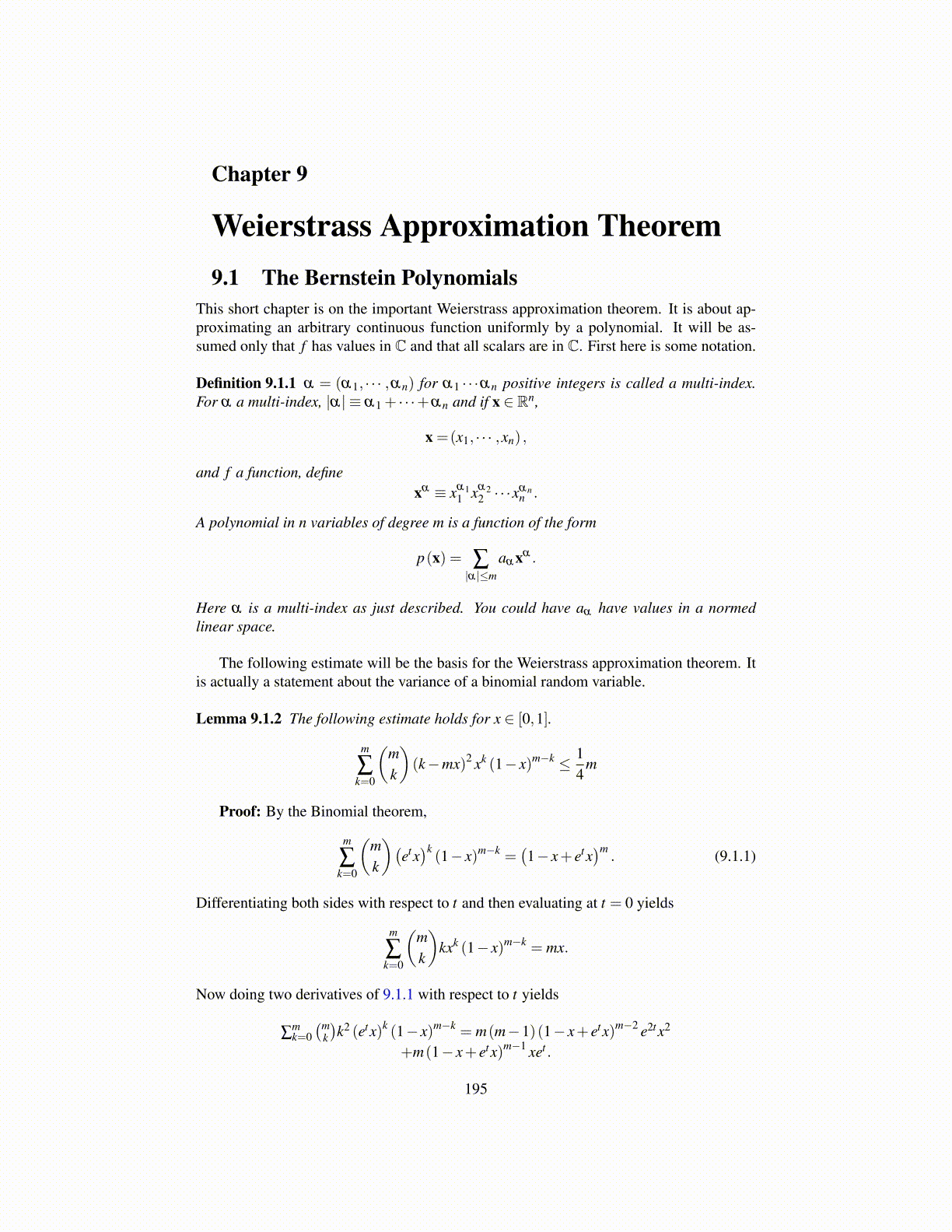
Chapter 9
Weierstrass Approximation Theorem9.1 The Bernstein Polynomials
This short chapter is on the important Weierstrass approximation theorem. It is about ap-proximating an arbitrary continuous function uniformly by a polynomial. It will be as-sumed only that f has values in C and that all scalars are in C. First here is some notation.
Definition 9.1.1 α = (α1, · · · ,αn) for α1 · · ·αn positive integers is called a multi-index.For α a multi-index, |α| ≡ α1 + · · ·+αn and if x ∈ Rn,
x =(x1, · · · ,xn) ,
and f a function, definexα ≡ xα1
1 xα22 · · ·x
αnn .
A polynomial in n variables of degree m is a function of the form
p(x) = ∑|α|≤m
aα xα .
Here α is a multi-index as just described. You could have aα have values in a normedlinear space.
The following estimate will be the basis for the Weierstrass approximation theorem. Itis actually a statement about the variance of a binomial random variable.
Lemma 9.1.2 The following estimate holds for x ∈ [0,1].
m
∑k=0
(mk
)(k−mx)2 xk (1− x)m−k ≤ 1
4m
Proof: By the Binomial theorem,
m
∑k=0
(mk
)(etx)k(1− x)m−k =
(1− x+ etx
)m. (9.1.1)
Differentiating both sides with respect to t and then evaluating at t = 0 yields
m
∑k=0
(mk
)kxk (1− x)m−k = mx.
Now doing two derivatives of 9.1.1 with respect to t yields
∑mk=0(m
k
)k2 (etx)k (1− x)m−k = m(m−1)(1− x+ etx)m−2 e2tx2
+m(1− x+ etx)m−1 xet .
195